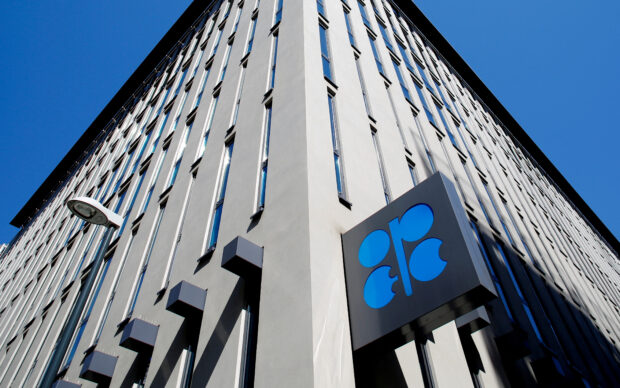OPEC faces declining demand and shrinking market share in early 2024

The logo of the Organization of the Petroleoum Exporting Countries (OPEC) is seen outside of OPEC’s headquarters in Vienna, Austria April 9, 2020. REUTERS/Leonhard Foeger/File photo
LONDON – OPEC is facing weakening demand for its crude in the first half of 2024 just as its global market share declines to the lowest since the Covid-19 pandemic on the back of output cuts and member Angola’s exit, according to Reuters calculations and data from forecasters.
The trend means the group would struggle to ease production cuts unless global oil demand accelerates or OPEC is prepared to accept lower oil prices.
Angola said this month it is leaving the Organization of the Petroleum Exporting Countries (OPEC) from January 2024, following exits by Ecuador in 2020, Qatar in 2019 and Indonesia in 2016.
Angola’s departure will leave the group with 12 members and take its production to below 27 million barrels per day (bpd) – less than 27 percent of the total global supply of 102 million bpd.
The last time OPEC‘s market share fell to 27 percent was during the 2020 pandemic, when global demand dropped by 15-20%. Global demand has since then recovered to record levels, meaning OPEC has lost market share to rivals.
Article continues after this advertisementREAD: Waning influence of OPEC+ in spotlight as prices flag
Article continues after this advertisementOPEC did not respond to a request for comment.
The group produced around half of global crude in the 1970s before the onset of non-OPEC supply sources such as the North Sea.
In later decades, OPEC‘s share stood at between 30 percent and 40 percent but record output growth from rivals such as the United States has steadily eaten into that share in recent years.
As of November 2023, OPEC‘s crude oil output accounted for 27.4 percent of the total market, down from 32-33 percent in 2017-2018, according to figures from the group’s monthly reports.
Second quarter demand
OPEC was founded in 1960 by Saudi Arabia, Kuwait, Venezuela, Iran and Iraq. Angola joined the group in 2007. Since 2017, OPEC has worked with Russia and other non-members as part of the OPEC+ group to manage the market.
Some small producers have joined OPEC in recent years, including Gabon in 2016, Equatorial Guinea in 2017 and Congo in 2018.
OPEC+ is currently cutting around 6 million bpd from its production so the group could in theory raise output to fight for market share.
READ: OPEC+ agrees to deepen voluntary oil output cuts
But it would come with a deep drop in price if demand for crude doesn’t improve.
Some OPEC+ members including Russia have said the group could take additional measures if needed.
Figures from three closely watched oil forecasters – the International Energy Agency (IEA), the U.S. Energy Information Administration (EIA) and OPEC itself – suggest little room for an easing of the cuts in the second quarter.
The EIA sees demand for OPEC crude falling in the second quarter from the first, based on a Reuters calculation.
READ: IEA lowers 2024 oil demand growth forecast
The IEA sees demand for OPEC crude holding steady while OPEC also sees it falling, albeit from a higher level than the other two forecasters.
OPEC sees its market share increasing in the long run as output falls elsewhere and world demand climbs further.
Its latest World Oil Outlook predicts the group’s total share of the oil market rising to 40% in 2045 as non-OPEC output starts declining from the early 2030s.